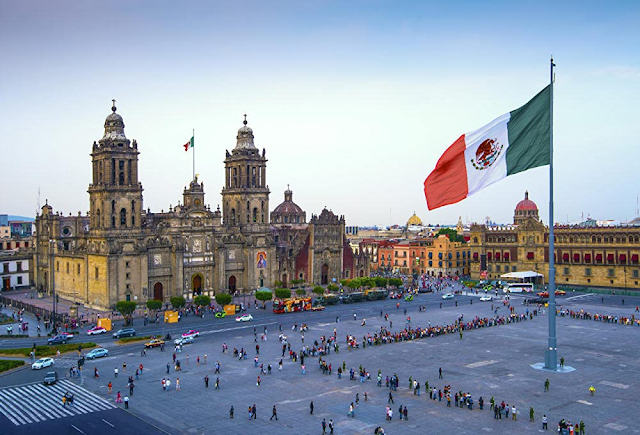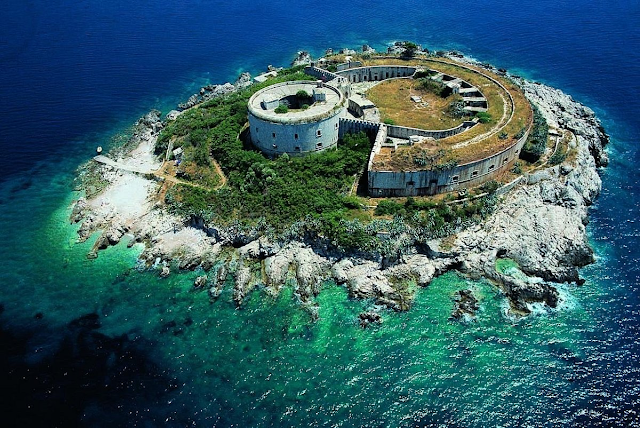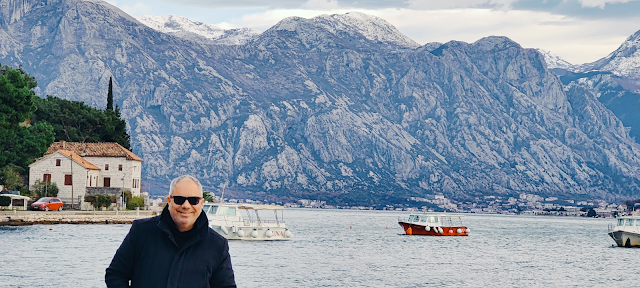✈️ Uri Travel ✈️
🇲🇽 Mexico 🇲🇽
Asia
🇮🇳 India - Mumbai
🇮🇳 India - Pune
🇮🇱 Israel
🇸🇬 Singapore
🇦🇪 United Emirates - Dubai
Europe
🇨🇾 Cyprus - Paphos
🇨🇿 Czech Republic - Prague
🇩🇰 Denmark
🇬🇧 England - London
🇫🇷 France - Paris
🇬🇪 Georgia - Batumi
🇩🇪 Germany - Berlin
🇬🇷 Greece - Athens
🇭🇺 Hungary - Budapest
🇮🇹 Italy - Rome
🇲🇪 Montenegro
🇳🇱 Netherlands - Amsterdam
🇵🇱 Poland - Warsaw
🇷🇴 Romania
🇷🇸 Serbia - Belgrade
🇪🇸 Spain - Barcelona
🇪🇸 Spain - Madrid
Mexico City, or Ciudad de México (CDMX), is the capital and largest city in Mexico, and one of the most important cultural, political, and financial centers in Latin America.
Quick Facts
- Population: ~22 million (metro area)
- Altitude: 2,240 meters (7,350 feet) above sea level
- Language: Spanish
- Currency: Mexican Peso (MXN)
Location on the Map 🌍
- The third-largest pyramid in the world
- Built around 200 CE
- Thought to have been used for astronomical, ceremonial, and religious purposes.
- Slightly smaller but equally impressive
- Aligned with the Cerro Gordo Mountain and the stars
- Used for ritual sacrifices and ceremonies
- The central road that runs through the city
- Flanked by smaller platforms, temples, and residential areas
- Stretches over 2 km and leads from the Pyramid of the Moon down through the site
- Early morning pickup (usually around 5:00–5:30 am) from Mexico City
- You’ll drive about 1 hour northeast to the balloon port near Teotihuacan
- Flights typically launch at sunrise, when the air is calm and the views are magical
- You'll soar above the Pyramid of the Sun, Pyramid of the Moon, and the Avenue of the Dead, with panoramic views of the entire archaeological zone and surrounding landscapes
- The ride lasts around 45 minutes to 1 hour
- Many packages include breakfast and even a champagne toast after landing
- Huitzilopochtli (God of war and the sun)
- Tlaloc (God of rain and agriculture).
Key Facts:
- Location: Historic center of Mexico City, near the Zócalo (main square)
- Construction: Built in stages from around 1325 until the Spanish conquest in 1521
- Design: It had a twin staircase leading to two shrines at the top—one for each god
- Destruction: The Spanish destroyed it after the conquest and built their cathedral (Metropolitan Cathedral) nearby using some of the temple's stones.
- Rediscovery: Parts of the temple were rediscovered in the 20th century, especially after the discovery of the Coyolxauhqui Stone in 1978.
You can visit the Templo Mayor archaeological site and museum, which showcases many artifacts and gives insight into Aztec civilization.
Quick Overview:
- Full name: Catedral Metropolitana de la Asunción de la Santísima Virgen María a los cielos
- Location: Right on the Zócalo, Mexico City’s main square, next to the ruins of the Templo Mayor
- Construction: Started in 1573 and took over 250 years to complete (finished in the early 1800s)
- Architectural style: A stunning mix of Renaissance, Baroque, and Neoclassical styles due to the long construction period
- Significance: The Spanish built it after the conquest of the Aztec Empire as a symbol of Catholic dominance and colonization
The building is notable for its beautiful architecture, which blends colonial and modern styles. It houses the office of the President of Mexico and is a symbol of Mexican political power. Inside the palace, you'll find several important rooms, such as:
-
The Diego Rivera Murals: One of the main attractions is the stunning series of murals painted by the famous Mexican artist Diego Rivera. These murals depict Mexico's history, from the Aztec era to the post-revolutionary period.
-
The Patio Central: The central courtyard of the palace is surrounded by galleries and a beautiful fountain.
-
The President's Office: Though not open to the public, it remains an important part of the building's functionality.
The Palacio Nacional is also home to various museums and art collections that highlight Mexican history and culture. Visitors can explore its rich history and see significant works of art, making it an essential part of any trip to Mexico City.
Here are some key points about the Zócalo:
-
Historical Significance: The Zócalo was originally the main ceremonial center of the Aztec capital, Tenochtitlán. After the Spanish conquest, it became the site of important colonial buildings, and it has remained a center for political and social activity throughout Mexican history.
-
Important Buildings:
-
Palacio Nacional: As mentioned earlier, the National Palace, which houses the offices of the President, is located on the eastern side of the Zócalo.
-
Metropolitan Cathedral: On the northern side of the square is the Catedral Metropolitana, a stunning example of colonial architecture and one of the oldest cathedrals in the Americas.
-
Templo Mayor: The remains of the Templo Mayor, the main temple of the Aztec capital, are located nearby, and there is a museum dedicated to its history.
-
-
Cultural and Political Hub: The Zócalo is frequently the site of large public events, such as national celebrations, protests, concerts, and festivals. For instance, the Mexican Independence Day celebrations take place here, with the Grito de Dolores being reenacted from the balcony of the National Palace.
-
Modern Role: Today, the Zócalo remains a vibrant public space, and its surroundings are filled with shops, restaurants, and historic landmarks. It also hosts temporary events, such as ice skating rinks during winter, art exhibitions, and cultural performances.
Here are some key details about Casa de los Azulejos:
-
Architectural Significance: The building was originally constructed in the 18th century by the Count of the Valley of Orizaba, and it features a stunning example of colonial-era architecture. The facade, adorned with intricate ceramic tiles, is an exquisite blend of baroque and colonial styles, with ornate details throughout. The tiles themselves are the key feature, and they depict a variety of scenes and patterns, which have become a symbol of the building.
-
Historical Background: The Casa de los Azulejos was initially built as a private residence for the wealthy family of the Count. Over the years, it passed through different hands and was eventually transformed into a commercial building. The building’s rich history and architectural beauty have made it one of the most visited landmarks in the city.
-
Cultural Importance: Today, the Casa de los Azulejos houses a Sanborns restaurant, a famous Mexican chain, and department store. Visitors can enter the building to enjoy both the historic beauty of the space and the delicious traditional Mexican food served in the restaurant. It's a popular spot for both locals and tourists who want to experience Mexican culture in an elegant, historical setting.
-
Interior: Inside the building, you'll find the same level of craftsmanship and beauty. The courtyard of the building is a lovely space with intricate tilework, and there is also an impressive staircase and balcony that adds to the grandeur of the structure.
-
Location and Accessibility: Located on the bustling Francisco I. Madero Street, the Casa de los Azulejos is easily accessible by foot from the Zócalo and other important areas in the historic center of Mexico City. It is a must-see landmark for anyone visiting the city, offering a glimpse into Mexico's rich architectural and cultural heritage.
Site: Casa de Azulejos (Sanborns), Avenida Madero | Mexico City
Key Facts about Torre Latinoamericana:
-
Location:
It's located right in the historic center of Mexico City, at the end of Francisco I. Madero Street, near Alameda Central park. -
Height & Structure:
The tower stands at 182 meters (597 feet) tall and has 44 floors. When it was completed in 1956, it was one of the tallest buildings in Latin America — and the tallest in Mexico for many years. -
Engineering Marvel:
One of the most impressive aspects of the Torre Latinoamericana is its earthquake-resistant design. It has withstood multiple major earthquakes — especially the devastating 1985 earthquake — with no structural damage. This achievement made it a case study for seismic engineering around the world. -
Observation Deck:
The tower has a mirador (observation deck) on the top floors, which offers 360° panoramic views of the city. On clear days, you can see landmarks like:
- The Palacio de Bellas Artes
- The Zócalo
- Chapultepec Castle
- Even the Popocatépetl and Iztaccíhuatl volcanoes in the distance
Site: Latin American Tower
The park features elegant tree-lined walkways, ornamental fountains, marble statues, and benches scattered throughout its peaceful grounds. Among its most notable features are the Hemicycle to Benito Juárez, a neoclassical monument honoring the former Mexican president, and several beautiful European-style fountains that date back to the 19th century.
Alameda Central has undergone several restorations over the centuries but remains a beloved green space surrounded by key landmarks, including Bellas Artes, Torre Latinoamericana, and Museo Mural Diego Rivera. It’s a perfect spot to relax, take a break from the bustle of the city, and soak in the rich cultural and historical atmosphere.
- Hand-embroidered textiles
- Colorful Otomi fabrics
- Alebrijes (fantastical carved creatures)
- Ceramics, lacquerware, and silver jewelry
- Leather goods, hammocks, and woven baskets
Shows typically run for about two hours and are held on Tuesdays, Fridays, and Sundays. Many tours enhance the experience by including pre-show activities such as sampling traditional Mexican drinks like mezcal or pulque, enjoying local tacos, and providing insights into the history and cultural significance of lucha libre.
The monument features a towering Victory Column topped by a golden statue of the Greek goddess Nike, representing victory, holding a laurel crown and a broken chain. At its base are statues of key figures from the independence movement, including Miguel Hidalgo, José María Morelos, and Vicente Guerrero. Inside the column is a mausoleum that holds the remains of several of these heroes.
Surrounded by traffic circles and city life, El Ángel is also a popular gathering spot, especially during national holidays, sporting victories, and civic demonstrations. Its central location, historical significance, and striking architecture make it a must-see landmark in Mexico City.
Site: El Ángel - Monumento a la Independencia, Paseo de la Reforma
Originally built in the late 18th century as a summer retreat for Spanish viceroys, the castle has served various roles throughout Mexican history, including a military academy, imperial residence, and presidential residence. It is famously remembered for the heroic defense by the Niños Héroes, six young cadets who died resisting the U.S. invasion in 1847.
Today, the castle houses the National Museum of History, featuring exhibits on Mexico’s pre-Hispanic past, colonial era, independence movement, and 20th-century reforms. Visitors are drawn not only to its rich history but also to its stunning architecture, gardens, and panoramic views of the city. A visit to Chapultepec Castle is both a cultural and visual highlight of Mexico City.
Site: National Museum of History Chapultepec Castle
The park is divided into four sections and is home to major attractions such as the Chapultepec Castle, Museo Nacional de Antropología, Museo Tamayo, and Lago de Chapultepec, a scenic lake with paddle boats and picnic areas. It also features zoological gardens, forest trails, playgrounds, and monuments.
Steeped in history, Chapultepec was once a sacred space for the Aztecs, and later a retreat for Spanish viceroys and Mexican leaders.
Site: Chapultepec Tourist Guide
The museum is home to iconic pieces such as the Aztec Sun Stone and the Olmec Colossal Head, and it also offers interactive displays on the anthropology and history of Mexico's diverse ethnic groups. Its striking architecture, designed by Pedro Ramírez Vázquez, includes a central courtyard and a huge cantilevered roof. A hub for education and research, the museum also hosts events, exhibitions, and performances related to Mexican and global cultures.
👓Watch the Video👓
History and Significance
Frida Kahlo’s legacy as an artist and cultural icon is inextricably tied to the Casa Azul. She lived in the house with Rivera for many years, and it was here that she painted some of her most personal and celebrated works. After her death, the house remained a significant part of her memory, and in 1958, it was transformed into a museum, largely thanks to Rivera's wishes and efforts. The museum aims to preserve and showcase the life, work, and personal history of Kahlo, offering a glimpse into both her artistic genius and her complex personal life.
Collections and Exhibits
The Museo Frida Kahlo offers an intimate experience of the artist's life, with exhibits that reflect her unique style, influences, and the deep personal struggles she faced. The museum features:
-
Frida’s Paintings: Some of Kahlo’s iconic works are on display, including "The Two Fridas", "Self-Portrait with Thorn Necklace and Hummingbird", and "The Broken Column". Her art is deeply rooted in her experiences with pain, identity, and Mexican culture, often combining surrealism, folk art, and realism.
-
Personal Artifacts: Visitors can see personal items from Kahlo’s life, such as clothing, photographs, letters, and personal diaries. Many of these items reflect her deep connection to her heritage, as well as her emotional and physical struggles, especially those related to the bus accident she endured in her youth, which left her with lifelong injuries.
-
Kahlo’s Studio and Spaces: The house itself is as much a part of the experience as the exhibits. You can walk through Frida’s studio, where she painted her most famous works, and see the beautiful garden she designed herself, filled with vibrant plants that reflect the colors in her paintings. The museum also includes some of her traditional Mexican clothing and jewelry that she wore proudly as part of her identity.
-
Diego Rivera’s Influence: Since Kahlo and Rivera’s relationship was deeply intertwined, the museum also touches on Rivera’s contributions, especially his murals, which reflected both his political views and the love and tension within his relationship with Kahlo.
-
The Blue House’s Architecture: The building itself is a beautiful example of Mexican folk architecture. It has a rich history, with some rooms preserved just as they were during Kahlo's lifetime. The vibrant blue color of the house (which was chosen by Kahlo herself) is a symbol of her love for traditional Mexican art and culture. The layout of the house includes several open courtyards, a garden, and a small atelier where Kahlo created her art.
Cultural Impact
The Museo Frida Kahlo is not only dedicated to her work but also to her legacy as a symbol of resilience, individuality, and feminism. Kahlo's life was marked by pain, both physical and emotional, yet she created a body of work that explored themes of identity, gender, Mexican culture, and political activism. Her unique approach to painting and her unapologetic embrace of her Mexican roots have made her an international icon, celebrated by people from all walks of life.
Visitor Experience
The museum is located in the heart of Coyoacán, a historical neighborhood in Mexico City, making it an ideal destination for those exploring the city’s artistic and cultural scene. Visitors can stroll through the cobblestone streets of Coyoacán before or after visiting the museum, which adds to the charm of the experience.
The museum also offers guided tours in multiple languages, providing a deeper understanding of Kahlo's life and artistic vision. It has a café, a museum shop, and temporary exhibits that often focus on different aspects of Frida’s life, such as her relationship with Rivera, political involvement, and the cultural context in which she created her art.
Site: Frida Kahlo Museum | Frida Kahlo Museum
Trajineras in Xochimilco:
-
The boats are traditionally painted in bright, vibrant colors and are often adorned with flowers.
-
You can rent a trajinera for a few hours to float along the canals, enjoying the peaceful atmosphere.
-
Many of the boats are equipped with music, and it’s common for visitors to hire mariachi bands or ranchera musicians to serenade them as they cruise.
-
The ride is often accompanied by food and drinks, as vendors navigate the canals to offer items such as tacos, tostadas, agua fresca, and even tequila.
Gondola-Like Experience:
While not exactly "gondolas" in the traditional sense like those found in Venice, the experience in Xochimilco’s trajineras offers a similar charm—floating through scenic waterways surrounded by greenery, and often with a festive atmosphere.
Xochimilco is a popular destination for both locals and tourists, especially on weekends, when the canals are bustling with visitors enjoying the lively ambiance. It’s an excellent way to experience Mexico City’s rich cultural heritage in a relaxed and fun setting.














































